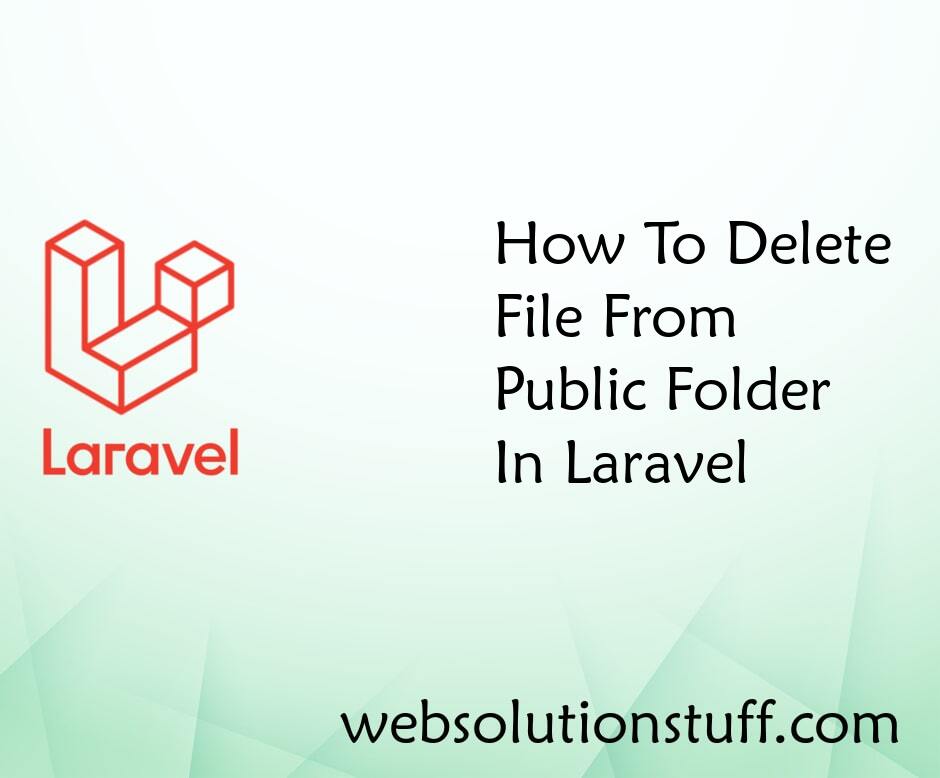How to Create Custom Login and Registration in Laravel 10
Websolutionstuff | Aug-25-2023 | Categories : Laravel PHP MySQL Bootstrap
In the ever-evolving landscape of web development, crafting a tailor-made user authentication system stands as a pivotal milestone for developers. Laravel, the renowned PHP framework known for its elegant syntax and powerful features, empowers developers to create exceptional web applications.
With the release of Laravel 10, the framework has become even more versatile and developer-friendly.
While Laravel comes equipped with a comprehensive authentication scaffolding, there are instances where you may want to build a custom login and registration system to precisely match your project's unique requirements and design preferences.
This endeavor allows you to exercise full control over the user experience, ensuring that it seamlessly integrates with your application's aesthetics and functionalities.
In this in-depth guide, we embark on a journey to explore the process of crafting a fully custom login and registration system in Laravel 10.
Whether you're an experienced Laravel developer looking to expand your skills or a newcomer seeking to grasp the intricacies of user authentication, this article is tailored to provide you with a step-by-step roadmap, complete with practical code examples, to help you create a personalized authentication system.
Throughout this tutorial, we'll delve into the core concepts of Laravel's authentication mechanisms, unveiling the mechanisms that drive user registration, login, and password management.
By the end, you'll have the knowledge and confidence to sculpt an authentication system that aligns perfectly with your project's vision.
So, whether you're building a personal blog, an e-commerce platform, or a complex web application, this guide is your companion in creating a custom login and registration system that sets your project apart.
Let's embark on this exciting journey of Laravel 10 customization and authentication.
If you haven't already, install Laravel 10 by running the following command.
composer create-project laravel/laravel my-custom-auth-app "10.*"
Open the .env file in your project's root directory and configure your database connection details.
DB_CONNECTION=mysql
DB_HOST=127.0.0.1
DB_PORT=3306
DB_DATABASE=your_database_name
DB_USERNAME=your_database_username
DB_PASSWORD=your_database_password
In your routes/web.php file, define custom routes for registration and login.
<?php
use Illuminate\Support\Facades\Route;
use App\Http\Controllers\Auth\AuthController;
/*
|--------------------------------------------------------------------------
| Web Routes
|--------------------------------------------------------------------------
|
| Here is where you can register web routes for your application. These
| routes are loaded by the RouteServiceProvider within a group which
| contains the "web" middleware group. Now create something great!
|
*/
Route::get('login', [AuthController::class, 'index'])->name('login');
Route::post('post-login', [AuthController::class, 'postLogin'])->name('login.post');
Route::get('registration', [AuthController::class, 'registration'])->name('register');
Route::post('post-registration', [AuthController::class, 'postRegistration'])->name('register.post');
Route::get('dashboard', [AuthController::class, 'dashboard']);
Route::get('logout', [AuthController::class, 'logout'])->name('logout');
Generate custom controllers for registration and login.
php artisan make:controller Auth/AuthController
These commands will create controller files in the app/Http/Controllers/Auth directory.
<?php
namespace App\Http\Controllers\Auth;
use App\Http\Controllers\Controller;
use Illuminate\Http\Request;
use Illuminate\Support\Facades\Auth;
use Session;
use App\Models\User;
use Hash;
use Illuminate\View\View;
use Illuminate\Http\RedirectResponse;
class AuthController extends Controller
{
/**
* Write code on Method
*
* @return response()
*/
public function index(): View
{
return view('auth.login');
}
/**
* Write code on Method
*
* @return response()
*/
public function registration(): View
{
return view('auth.registration');
}
/**
* Write code on Method
*
* @return response()
*/
public function postLogin(Request $request): RedirectResponse
{
$request->validate([
'email' => 'required',
'password' => 'required',
]);
$credentials = $request->only('email', 'password');
if (Auth::attempt($credentials)) {
return redirect()->intended('dashboard')
->withSuccess('You have Successfully loggedin');
}
return redirect("login")->withSuccess('Oppes! You have entered invalid credentials');
}
/**
* Write code on Method
*
* @return response()
*/
public function postRegistration(Request $request): RedirectResponse
{
$request->validate([
'name' => 'required',
'email' => 'required|email|unique:users',
'password' => 'required|min:6',
]);
$data = $request->all();
$check = $this->create($data);
return redirect("dashboard")->withSuccess('Great! You have Successfully loggedin');
}
/**
* Write code on Method
*
* @return response()
*/
public function dashboard(): RedirectResponse
{
if(Auth::check()){
return view('dashboard');
}
return redirect("login")->withSuccess('Opps! You do not have access');
}
/**
* Write code on Method
*
* @return response()
*/
public function create(array $data)
{
return User::create([
'name' => $data['name'],
'email' => $data['email'],
'password' => Hash::make($data['password'])
]);
}
/**
* Write code on Method
*
* @return response()
*/
public function logout(): RedirectResponse
{
Session::flush();
Auth::logout();
return Redirect('login');
}
}
Create custom registration and login views in the resources/views/auth directory.
resources/views/auth/login.blade.php
@extends('layout')
@section('content')
<main class="login-form">
<div class="cotainer">
<div class="row justify-content-center">
<div class="col-md-8">
<div class="card">
<div class="card-header">Login</div>
<div class="card-body">
<form action="{{ route('login.post') }}" method="POST">
@csrf
<div class="form-group row">
<label for="email_address" class="col-md-4 col-form-label text-md-right">E-Mail Address</label>
<div class="col-md-6">
<input type="text" id="email_address" class="form-control" name="email" required autofocus>
@if ($errors->has('email'))
<span class="text-danger">{{ $errors->first('email') }}</span>
@endif
</div>
</div>
<div class="form-group row">
<label for="password" class="col-md-4 col-form-label text-md-right">Password</label>
<div class="col-md-6">
<input type="password" id="password" class="form-control" name="password" required>
@if ($errors->has('password'))
<span class="text-danger">{{ $errors->first('password') }}</span>
@endif
</div>
</div>
<div class="form-group row">
<div class="col-md-6 offset-md-4">
<div class="checkbox">
<label>
<input type="checkbox" name="remember"> Remember Me
</label>
</div>
</div>
</div>
<div class="col-md-6 offset-md-4">
<button type="submit" class="btn btn-primary">
Login
</button>
</div>
</form>
</div>
</div>
</div>
</div>
</div>
</main>
@endsection
resources/views/auth/registration.blade.php
@extends('layout')
@section('content')
<main class="login-form">
<div class="cotainer">
<div class="row justify-content-center">
<div class="col-md-8">
<div class="card">
<div class="card-header">Register</div>
<div class="card-body">
<form action="{{ route('register.post') }}" method="POST">
@csrf
<div class="form-group row">
<label for="name" class="col-md-4 col-form-label text-md-right">Name</label>
<div class="col-md-6">
<input type="text" id="name" class="form-control" name="name" required autofocus>
@if ($errors->has('name'))
<span class="text-danger">{{ $errors->first('name') }}</span>
@endif
</div>
</div>
<div class="form-group row">
<label for="email_address" class="col-md-4 col-form-label text-md-right">E-Mail Address</label>
<div class="col-md-6">
<input type="text" id="email_address" class="form-control" name="email" required autofocus>
@if ($errors->has('email'))
<span class="text-danger">{{ $errors->first('email') }}</span>
@endif
</div>
</div>
<div class="form-group row">
<label for="password" class="col-md-4 col-form-label text-md-right">Password</label>
<div class="col-md-6">
<input type="password" id="password" class="form-control" name="password" required>
@if ($errors->has('password'))
<span class="text-danger">{{ $errors->first('password') }}</span>
@endif
</div>
</div>
<div class="form-group row">
<div class="col-md-6 offset-md-4">
<div class="checkbox">
<label>
<input type="checkbox" name="remember"> Remember Me
</label>
</div>
</div>
</div>
<div class="col-md-6 offset-md-4">
<button type="submit" class="btn btn-primary">
Register
</button>
</div>
</form>
</div>
</div>
</div>
</div>
</div>
</main>
@endsection
resources/views/dashboard.blade.php
@extends('layout')
@section('content')
<div class="container">
<div class="row justify-content-center">
<div class="col-md-8">
<div class="card">
<div class="card-header">{{ __('Dashboard') }}</div>
<div class="card-body">
@if (session('success'))
<div class="alert alert-success" role="alert">
{{ session('success') }}
</div>
@endif
You are Logged In
</div>
</div>
</div>
</div>
</div>
@endsection
resources/views/layout.blade.php
<!DOCTYPE html>
<html>
<head>
<title>How to Create Custom Login and Registration in Laravel 10 - Websolutionstuff</title>
<link rel="stylesheet" href="https://stackpath.bootstrapcdn.com/bootstrap/4.1.3/css/bootstrap.min.css">
<style type="text/css">
@import url(https://fonts.googleapis.com/css?family=Raleway:300,400,600);
body{
margin: 0;
font-size: .9rem;
font-weight: 400;
line-height: 1.6;
color: #212529;
text-align: left;
background-color: #f5f8fa;
}
.navbar-laravel
{
box-shadow: 0 2px 4px rgba(0,0,0,.04);
}
.navbar-brand , .nav-link, .my-form, .login-form
{
font-family: Raleway, sans-serif;
}
.my-form
{
padding-top: 1.5rem;
padding-bottom: 1.5rem;
}
.my-form .row
{
margin-left: 0;
margin-right: 0;
}
.login-form
{
padding-top: 1.5rem;
padding-bottom: 1.5rem;
}
.login-form .row
{
margin-left: 0;
margin-right: 0;
}
</style>
</head>
<body>
<nav class="navbar navbar-expand-lg navbar-light navbar-laravel">
<div class="container">
<a class="navbar-brand" href="#">Laravel</a>
<button class="navbar-toggler" type="button" data-toggle="collapse" data-target="#navbarSupportedContent" aria-controls="navbarSupportedContent" aria-expanded="false" aria-label="Toggle navigation">
<span class="navbar-toggler-icon"></span>
</button>
<div class="collapse navbar-collapse" id="navbarSupportedContent">
<ul class="navbar-nav ml-auto">
@guest
<li class="nav-item">
<a class="nav-link" href="{{ route('login') }}">Login</a>
</li>
<li class="nav-item">
<a class="nav-link" href="{{ route('register') }}">Register</a>
</li>
@else
<li class="nav-item">
<a class="nav-link" href="{{ route('logout') }}">Logout</a>
</li>
@endguest
</ul>
</div>
</div>
</nav>
@yield('content')
</body>
</html>
Now, run Laravel 10 custom login and registration using the following command.
php artisan serve
You might also like:
Recommended Post
Featured Post

Carbon Add Hours To Date In La...
In this article, we will see carbon add hours to date in laravel 9. Carbon provides addHour and addHours() function...
Nov-22-2022

How To Create Custom Error Pag...
In this article, we will see how to create a custom error page in laravel 9. Here we will create a custom 404 error...
Feb-09-2023

How To Delete File From Public...
In this article, we will see how to remove/delete files from public folders. We will give you a demo of how to remo...
Sep-14-2020

How to Create Login and Regist...
Hello developers! In this guide, We'll see how to create a login and registration page in laravel 11 using the larav...
Apr-15-2024